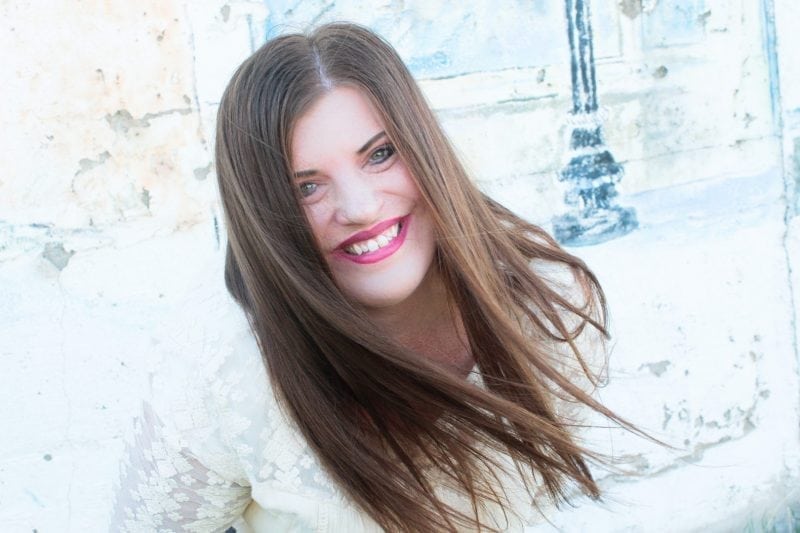If we could look at depression from the inside out, what would we see? If we had the finest, high-tech microscope to snap a photo of what it looked like burning inside someone’s body, what would we see? My guess is it would be an awful sight and one that we wouldn’t be able to un-see. So, why is it that we focus on diseases or medical conditions that we can see and/or touch the symptoms before we address those that we have to treat based solely on the word of the person living with it? Why do we feel the need to be so judgmental of someone based on their word when it comes to mental illness, but if they showed up on our front door step with head-to-toe bruises and a black eye, we would shelter them from physical abuse? This has to stop because there are men and women around us, from every walk of life, who live with depression and their outside appearance is NOTHING like their insides.
I had my first major bout with depression when I was 19. I had a lot of female health problems in high school and college, coupled with a lot of pressure to be a perfect Mormon girl, and after a bad round of birth control, I went absolutely crazy. It was a very dark time for me and I could not shake it using prayer and service alone. I grew up in a family that was predominantly encouraged to only cry when we were bleeding or near-death, so when I started to feel like the demons were taking over my insides, I couldn’t cry openly about it. I was scared to speak up and describe my inner turmoil because I thought no one would believe me. On the outside, I looked “fine.” I was thriving in school, had a great job, went to church and didn’t have any physical signs of harm on my body. I had an amazing pediatrician who took care of me until I moved away for college. I remember sitting in her office reading a pharmaceutical advertisement that asked about symptoms that categorized PMDD (premenstrual dysphoric disorder) and I answered in the affirmative to all but one or two of the questions. I knew I needed help and she trusted my self-diagnosis and let me call the shots on my healing and depression management, even at a young age.
Over the last 15+ years I have learned a lot about how to break the social stigma of what depression should look like and how I can conquer the really hard days and still thrive as a successful professional woman. I learned the most about myself and how to cope when I was in organized therapy. The pressure from my upbringing in the LDS Church along with some family struggles and the depression during college all came to a head when I was 28 (nearly 10 years after my first episode) and I had to seek professional help to learn how to cope. Do NOT feel guilty for seeking a therapist for help. At the time, I had a boss who told me, “Sane people go to therapy to stay sane and crazy people never go because they don’t think they have a problem.” Therapy forced me to peel back some rotten, toxic realities that I had harbored for too many years. Once I let myself feel pain, cry ugly tears about the past, and face it, I started to heal. Therapy did not cure me. Not at all. Therapy merely helped me learn how to cope and live a full life without the fear of my mental illness taking over. That doesn’t mean that I don’t have hard days anymore. In fact, I’ve had some insanely hard life challenges in the last two years and I don’t know how I would’ve dealt with them pre-therapy. Listen to your heart, listen to your body and do not settle for a therapist that you’re not comfortable with, for whatever reason. Take control of your health and you will heal on your terms.
As a society we are really hard on women. I hate it and I know that it has compounded my mental illness because I stress about being this idealistic version of perfection that doesn’t exist. I love the saying “perfectly imperfect.” I also love the quip that we need to be broken for the pieces to be put back together. If we lived in a perfect world with people who were total rock stars at coping, we would all have a stellar therapist on speed dial, our insurance coverage would include an unlimited amount of therapy visits and Zoloft would be free under all prescription plans. Sadly, that’s not the case, so anyone who has depression is tasked with fighting the good fight both internally and externally as they try to move forward with life. I am here to tell you, it is absolutely possible. Don’t give up! Speak up and cling to those you trust because you know they love you no matter what. And don’t be afraid to call someone’s bluff when they say you’re not praying hard enough, doing enough service, telling your kids or spouse you love them a million times a day. Only you know your heart and you get to make ALL choices about your mental health game plan. Go to therapy, take medication, exercise your guts out, eat chocolate cake in your bed, skip church if you need to, but don’t ever lose hope.
I am here to tell you that life does move forward; the fog lifts; the sunshine returns; and the calm after the storm will last longer than you think. Don’t be afraid if you have moments of depression creep back into your life. It’s hard to face life at times and our brains can only deal with so much. Be still, love yourself as if you were loving someone else with mental illness and know that it will pass. If you have lived through the fog and are here to talk about it, there is a reason. THAT is your life path: to buoy and encourage those who are still out to sea in the storm. Be the lighthouse for someone and provide them with the love and support that they so desperately need. Healing continues as we look past ourselves and help others cope through their storm.
Keep your eye to the sky and always remember, the rainbow comes AFTER the storm. If I can do it, you can too.
Until next time, my lovelies.
-R








